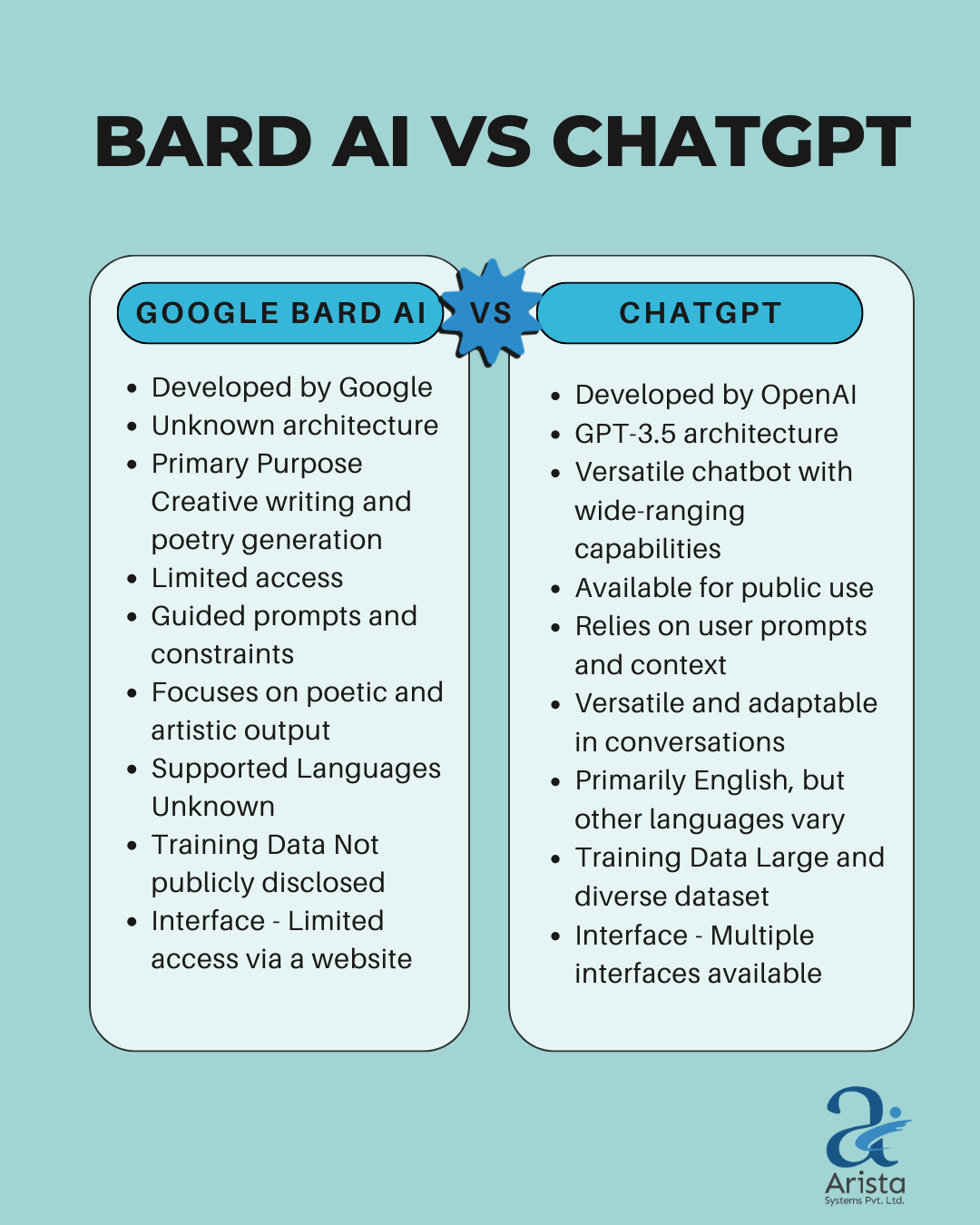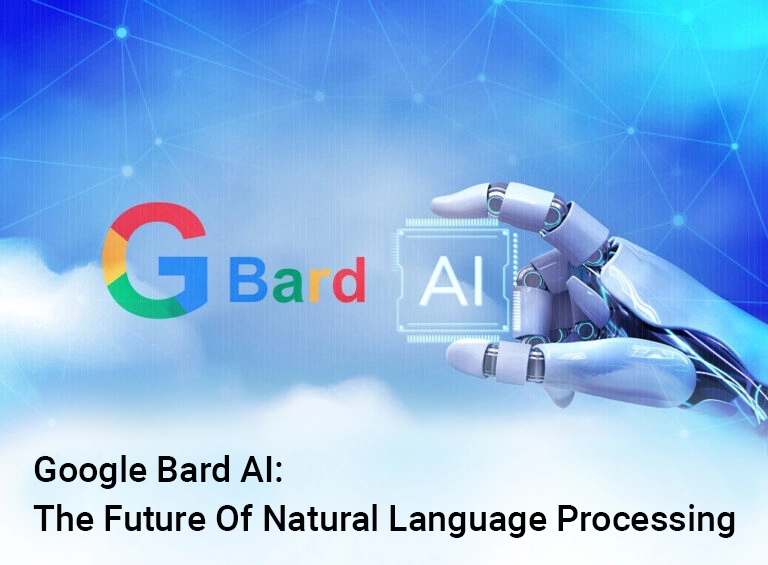Google Bard AI: The Future Of Natural Language Processing
Our interaction with technology evolves as technology advances. One of the latest innovations in natural language processing is Google Bard AI.
As everyone was going crazy with ChatGPT, Google introduced Google Bard AI, an experimental chatbot powered by AI. It was clear that there was fierce competition, and Google needed to react.
With it, Google has made a big advancement in the realm of artificial intelligence and machine learning. The future of natural language processing (NLP), which improves the comprehension and interpretation of human language, is today represented by AI tools like Google Bard AI and ChatGPT.
In this blog post, we’ll explore the basics of this tool, how it works, and its limitations too. We’ll also compare it to other AI services like ChatGPT.
But that’s not all – we’ll touch on the controversies surrounding Google Bard and discuss its role in shaping the future of natural language processing. If you’re curious about this exciting new technology keep reading to find out more.
What Is Google Bard AI?
It is Google’s conversational AI chat service. The main distinction between Google Bard AI and ChatGPT is that the information used by Google’s service will come from the Internet. As with most AI chatbots, it can help you with coding, math problems, and a variety of other tasks.
Based on a massive amount of data, Google Bard AI can handle a huge dataset, which enables it to deliver findings that are more precise. In that, it concentrates on the remote dataset rather than the local dataset and that is why BARD differs from previous language models.
How Does Google Bard AI Work?
Google Bard AI uses machine learning to understand and generate human-like text, making it a game-changer in the world of artificial intelligence.
The neural network-based model helps in understanding better. Depending on the input provided, this model generates text using transformer-based designs like the GPT-3.5.
This means that it will produce a response based on the context of the input, which can be a prompt or a statement. A variety of activities, including text classification, summarization, question-answering, and more, can be handled by it.
Google developed the natural language processing (NLP) model called LaMDA (Language Model for Dialogue Applications) with the intent to raise the standard of conversational AI systems and make it possible for humans and machines to engage in more casual, natural, and interesting ways. It uses this brand-new NLP model to take conversations to the next level.
Does Google Bard AI Support Different Languages?
Google Bard AI is accessible in more than 180 nations and territories worldwide and is offered in three different languages. The United States, the United Kingdom, Australia, India, Mexico, Malaysia, the United Arab Emirates, and Singapore are just a few of the 180 nations and territories.
Thanks to its constantly evolving AI technology, It is continually improving its ability to understand different languages and accents.
Google Bard AI Vs. ChatGPT
Large Language Models (LLM) are what distinguish ChatGPT and Google BARD most from each other. While OpenAI’s ChatGPT uses the GPT-4, Google BARD has its own Language Model for Dialogue Applications which is called LaMDA.
Their separate data sources are yet another main distinction between Google Bard and ChatGPT. While ChatGPT is trained on a predefined set of data that hasn’t been changed since 2021, Bard is trained on an “infiniset” of data selected to improve its discourse and has real-time access to the internet. Hence, the manner in which each AI gives the information can also vary slightly, though.
At this point, it is difficult to determine which chatbot is superior since they are both still in their early stages of training. ChatGPT generates and summarises text requests effectively. Whereas Bard does a better job of providing material that is more pertinent to the queries asked.
While both are impressive feats of artificial intelligence research, concerns over ethical implications persist too. While users provide input, we continue to train these chatbots, making adjustments and witnessing improvements.

Any Limitations With Google Bard AI?
Yes, Google Bard AI does have certain restraints. It is still developing, and its natural language processing capabilities have limitations.
It may not always understand complex or ambiguous sentences and depends on high-quality training data for accurate responses. Additionally, it may have difficulty handling tasks outside of its programmed scope.
The Controversy Around Google Bard
Despite being a groundbreaking technological advancement, it has faced controversies from different angles.
Some experts have raised concerns over the potential misuse of this large language model for spreading fake news or propaganda while others believe that it will lead to discoveries and revolutionize natural language processing.
However, as mentioned before, there are limitations to its capabilities in understanding complex sentences and context which has led to skepticism from users. Regardless of these challenges, Google has taken steps towards ensuring responsible usage of its creation.
The Future Of Natural Language Processing
Google Bard AI has revolutionized Natural Language Processing. It has opened up new possibilities for AI-generated language and has set a new benchmark for its competitors.
With its ability to generate coherent and creative responses, it has already made an impact on various industries such as social media, journalism, and entertainment.
The future of Natural Language Processing looks promising with Google Bard AI leading the way. As technology continues to evolve, we can only expect more revolutionary developments in the field of AI-generated language.
To stay updated on the latest trends in natural language processing and AI-generated content. You can keep an eye out for our upcoming blogs.
For inquiries related to digital solutions support you can get in touch with us now!


